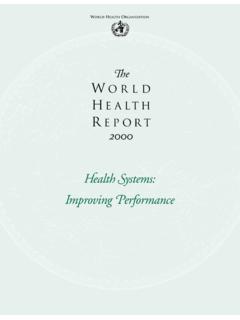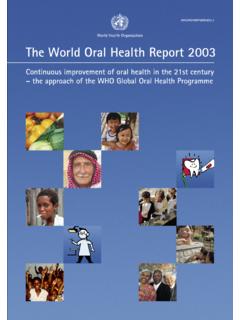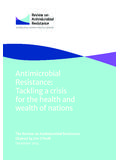Transcription of OBESITY UPDATE 2012 - OECD
1 OBESITY UPDATE 2012 The OBESITY epidemic slowed down in several OECD countries during the past three years. Rates grew less than previously projected, or did not grow at all, according to new data from ten OECD countries. Child OBESITY rates also stabilised in England, France, Korea and United States. However, rates remain high and social disparities in OBESITY are unabated. Many governments have stepped up efforts to tackle the root causes of OBESITY , embracing increasingly comprehensive strategies and involving communities and key stakeholders. There has been a new interest in the use of taxes on foods rich in fat and sugar, with several governments ( Denmark, Finland, France, Hungary) passing new legislation in 2011. This policy brief presents an UPDATE of analyses of trends and social disparities in OBESITY originally presented in OECD s report OBESITY and the Economics of Prevention: Fit not Fat , published in 2010.
2 Until 1980, fewer than one in ten people were obese. Since then, rates doubled or tripled and in 19 of 34 OECD countries the majority of the population is now overweight or obese. OECD projections suggest that more than two out of three people will be overweight or obese in some OECD countries by 2020. Three years on from the publication of the OECD report OBESITY and the economics of prevention: Fit not fat , rates have increased less than, or in line with, projections in most countries for which new data have become available. The data provide strong evidence that the progression of the epidemic has effectively come to a halt for the past ten years in countries such as Korea (where OBESITY rates have stabilised at 3-4%), Switzerland (7-8%), Italy (8-9%), Hungary (17-18%) and England (22-23%).
3 There is, however, no sign of retrenchment of the epidemic, in any country. Rates remain very high in most of the OECD, and countries continue to experience a large burden from chronic diseases associated with OBESITY . The latest data show modest increases in OBESITY over the past decade in countries like Spain and France, in the order of 2-3%, and larger increases in Ireland, Canada and the United States (4-5%), although an even larger increase had been expected in the United States, based on previous OECD projections. These findings would seem to contradict the argument that economic recession might fuel OBESITY by making people s diets less healthy. Figures 1 and 2 illustrate the progression of OBESITY and overweight rates, respectively, in seven OECD countries, along with previous OECD projections (dotted lines) for overweight.
4 The prevalence of OBESITY today varies nearly tenfold among OECD countries, from a low of 4% in Japan and Korea, to 30% or more in the United States and Mexico. Current OBESITY rates in all OECD countries are shown in an appendix to this document. Height and weight have been increasing since the 18th century, as income, education and living conditions gradually improved over time. While weight gains were largely beneficial to the health and longevity of our ancestors, an alarming number of people have now crossed the line beyond which further gains are dangerous. Severely obese people die 8-10 years sooner than those of normal-weight, similar to smokers, with every 15 extra kilograms increasing risk of early death by approximately 30%. OBESITY is estimated to be responsible for 1% to 3% of total health expenditure in most countries (5% to 10% in the United States) and costs will rise rapidly in coming years as OBESITY -related diseases set in.
5 2 Figure 1. OBESITY rates 0%5%10%15%20%25%30%35%197019751980198519 901995200020052010 Rate of obesityYearUSAE nglandSpainFranceCanadaKoreaItalySwitzer landIrelandHungary Figure 2. Overweight rates 25%30%35%40%45%50%55%60%65%70%75%1970198 01990200020102020 Rate of overweightYearUSAE nglandSpainFranceCanadaKoreaItaly---Past projectionNew data points Child OBESITY New data on child OBESITY from four OECD countries (England, France, Korea and United States) confirm and possibly strengthen the message emerging from analyses of adult OBESITY . Rates evolved according to previous OECD projections or, more often, below those projections, in all four countries. Child OBESITY rates have effectively remained stable (at 6-8%) over the past 20 years in France. The same is true in the other three countries during the past ten years, although with some fluctuations in the United States (Figure 3).
6 However, for child OBESITY as well as adult OBESITY , there is no clear sign of retrenchment of the epidemic, despite major policy efforts focused on children in some of the countries concerned. Figure 3. Child OBESITY , United States 0%10%20%30%40%50%60%19901995200020052010 20152020 Rate of OBESITY and overweightYearPast OECD 2010 projections and new survey data point for 2009 Boys obesityGirls obesityBoys overweightGirls overweight Estimates of the prevalence of overweight (including OBESITY ) in OECD and emerging countries among school-aged children aged 5-17 years, collated by the International Association for the Study of OBESITY , are available in an appendix to this document. One-in-five children are affected by excess body weight across all countries, and in Greece, the United States and Italy the figure is closer to one third.
7 Only in China, Korea and Turkey are 10% or less of children overweight. In most countries, boys have higher rates of overweight and OBESITY than do girls. Girls tend to have higher rates in Nordic countries (Sweden, Norway, Denmark), as well as in the United Kingdom, the Netherlands and Australia. Social disparities in OBESITY Women are more often obese than men, but male OBESITY rates have been growing faster than female rates in most OECD countries. OBESITY is more common among the poor and the less educated. In several OECD countries, women with little education are two to three times more likely to be overweight than more educated women, but smaller or no disparities exist for men. These disparities remained remarkably stable over the past decade. Even the latest data show no meaningful change in inequality indexes like the one reported in Figure 4 in the past three years, reflecting the failure of government policies aimed at protecting vulnerable groups.
8 Social disparities are also present in children (both boys and girls) in England, France and the United States, but not in Korea. Poor health goes hand in hand with poor job prospects for many obese people. Employers 3 prefer normal-weight over obese candidates, partly due to expectations of lower productivity. This contributes to an employment and wage gap in the United States, more than 40% of severely obese white women are out of work compared to just over 30% for all women. Obese people earn up to 18% less than people of normal weight. They need to take more days off, claim more disability benefits, and tend to be less productive on the job than people of normal weight. In northern European countries, obese people are up to three times more likely than others to receive a disability pension, and in the United States they are 76% more likely to suffer short-term disability.
9 When production losses are added to health care costs, OBESITY accounts for over 1% of GDP in the United States. Figure 4. Inequality index, overweight by education inequality index for overweight by education levelMenWomen Note: The index shows how many times as likely to be overweight is someone at the lowest end of the education spectrum in one country, compared to someone at the highest end. What can governments and markets do to promote better health? The OECD called for strong action against OBESITY in 2010. Analyses of the health and economic impacts of programmes to improve diet and increase physical activity led to the conclusion that comprehensive prevention strategies are needed, targeting different age groups and determinants of OBESITY . These would provide an affordable and cost-effective solution, saving hundreds of thousands of deaths from chronic diseases every year in the OECD area ( 155 000 in Japan, 75 000 in Italy, 70 000 in England), at a cost ranging from USD 12 (Mexico) to USD 32 (Canada) per capita, only a fraction of total health expenditure, and a small proportion of the 3% of their healthcare budgets that OECD countries now spend on prevention.
10 Governments can help people change their lifestyle by making new healthy options available or by making existing ones more accessible and affordable. Alternatively, they can use persuasion, education and information to make healthy options more attractive. This gentle approach is more expensive, hard to deliver and hard to monitor. A tougher approach, through regulation and fiscal measures, is more transparent but it hits all consumers indiscriminately, so can have high political and welfare costs. It may also be difficult to organise and enforce and have regressive effects. So far, governments in the OECD area have given priority to initiatives aimed at school-age children, such as changes in school meals and vending machines, better facilities for physical activity, and health education.
















